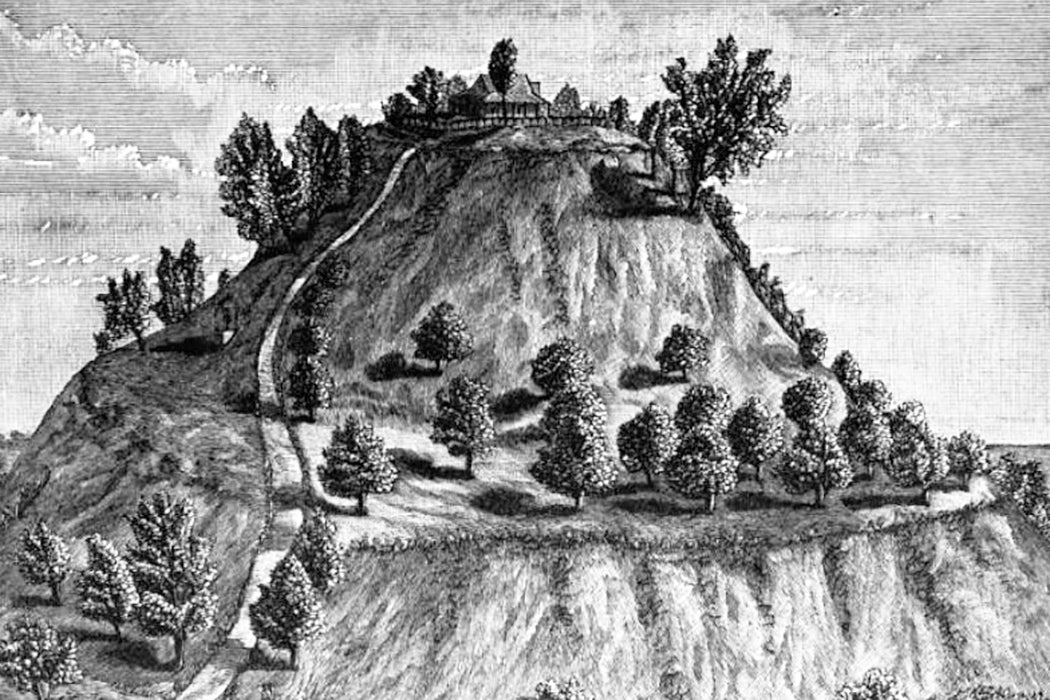Ever heard of Cahokia? The Cahokia Mounds in Collinsville, Illinois, are the remains of the largest pre-Columbian settlement north of Mexico. By some estimates, Cahokia was more populous than London in the twelfth century. Today it’s a UNESCO World Heritage Site and State Historic Site. There are 120 mounds—the largest, Monks Mound, covers 17 acres. Other examples of these monumental constructions used to be found in nearby East St. Louis and across the Mississippi in St. Louis (once nicknamed the Mound City); these were largely destroyed in the nineteenth century.
The Mississippian Culture, as we now call it, coalesced in the American Bottom region from about 600–1400 CE. And then the culture collapsed, well before Europeans came across the ruins. Much remains unknown about Cahokia and the peoples who lived and labored there.
Historian Julie Zimmermann Holt offers this theory: “The archaeological record of Cahokia indicates something more than a chiefdom and more than a ceremonial center. It was a ‘theater of power.‘” The “theater state” is a formulation of anthropologist Clifford Geertz: in such a state, religion and ritual bind together a multiethnic polity. Notably, Cahokia’s Mound 72 has the remains of 250 people, mostly young women, who were sacrificed and then interred there.
“Rituals became the essence of the Ramey State” writes Holt, using the name given this political entity by some archeologists. “The supporters of this state did so not because they were coerced but because they wanted to take part in the drama, a grand cultural experiment unlike anything seen before or after in their world.”
But then what happened? Larry V. Benson, Timothy R. Pauketat and Edward R. Cook offer up a climate change thesis to explain Cahokia’s sudden boom and equally sudden bust. The climate record, as preserved in tree rings and the archaeological record, suggests Cahokia exploded in growth and organization between 1050-1100 in the “one of the wettest 50-year periods during the last millennium.” There was an influx of migrants to the area, particularly the nearby uplands. The population of “downtown Cahokia” is estimated to have been 10,000-15,000 in this period. Agriculture and fishing boomed.
Then it all dried up. Benson et al. write, “Persistent drought [from 1100-1245] seems to have led to the downfall of upland farming if not also to the demise of Cahokia.” Additionally, there are fewer fish remains found for this drought period, suggesting that the lack of rain affected the American Bottom’s once rich freshwater fisheries.
Benson and company also say that around the year 1150, the first of several 3-km-long palisade walls were built around Monks Mound and the Grand Plaza of Cahokia. They consider this evidence of social unrest and conflict, sparked by climate change, concluding, “Persistent drought appears to have led to the downfall of upland farming if not also to the demise of Cahokia.”







